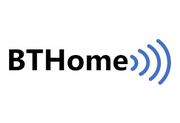
BTHome Library
BTHome is an energy efficient but flexible BLE format for devices to broadcast their sensor data and button presses. It is supported by popular home automation platforms, like Home Assistant, out of the box.
BTHome devices advertise data in a specific format, which is then received by either Home Assistant directly, ESPHome or Shelly devices (which act as bridges).
In Espruino we provide the BTHome module which allows you to advertise most common BTHome advertising types. Once configured, any new BTHome-advertising device found will magically appear in http://homeassistant/config/integrations/dashboard where it can be used alongside all your other devices.
Usage
Call require("BTHome").getAdvertisement() with an array of things ({type: string, v : value}) to advertise, and it
will return an advertisement that can be fed into NRF.setAdvertising:
function updateAdvertising() {
NRF.setAdvertising(require("BTHome").getAdvertisement([
{
type : "battery",
v : E.getBattery()
},
{
type : "temperature",
v : E.getTemperature()
}
]), {
name : "Sensor",
manufacturer : false, ///< turn off manufacturer data advertising (enabled by default in 2v26, interferes with BTHome)
// not being connectable/scannable saves power (but you'll need to reboot to connect again with the IDE!)
//connectable : false, scannable : false,
});
}
// Enable highest power advertising (on nRF52)
NRF.setTxPower(4);
// Update advertising now
updateAdvertising();
// Update advertising every 10 seconds...
setInterval(updateAdvertising, 10000);
See below for information on events and a list of allowable device types.
getAdvertisement adds an incrementing BTHome packet ID, which ensures that the data sent by the
device will only be treated as a 'new' packet the next time getAdvertisement is called. This
stops duplicate events and other data flooding your Home Assistant instance.
Note: No size checking is performed, so if you advertise too much data, Espruino will start to remove characters from the device name to make room for the increased data length. As such it's best to try and keep your device name as short as possible.
Device Types
The allowed device types are (most of) what's mentioned in https://bthome.io/format and the names have been kept as similar as possible
Values
battery- 0..100, inttemperature- degrees C, floating pointcount- 0..255, intcount16- 0..65535, intcount32- 0..0xFFFFFFFF, intcurrent- amps, floating pointduration- seconds, floating pointenergy- kWh, floating pointgas- gas (m3), int (32 bit)humidity- humidity %, inthumidity16- humidity %, floating pointmoisture- moisture %, floating pointpower- power (W), floating pointpressure- pressure (hPa), floating pointrotation- rotation in degrees, floating point (0.1 degree)volume- volume (L), floating point (0 .. 6553.5)voltage- voltage (V), floating pointco2- CO2 level (ppm), inttvoc- TVOC (volatile compounds) level (ug/m3), inttext- text string
Events
button_event- Call withvas one of:none,press,double_press,triple_press,long_press,long_double_pressorlong_triple_pressdimmer_event- Call this with am integervvalue - 0 for no movement, negative for left or positive for right
As mentioned in the BTHome docs, events are handled in Home Assistant 2023.5 and higher. You don't need to add a button/dimmer event if a button hasn't been pressed, however it may be easier to keep the field in, and if you want to have more than one button on a device then to get an event on the second button you need to define the first button with no event, for example:
require("BTHome").getAdvertisement([
{ type: "button_event", v: "none" },
{ type: "button_event", v: "press" }
]);
Each time you update the advertising, the packet ID will increase, and another event will be sent to Home Assistant. As such we'd recommend that you make sure you clear the event flag after updating the advertisement.
Note: Most BTHome scanners won't spend 100% of the time scanning - ESPHome scans for only 30ms out of 320ms by default (see here). To ensure you get events reported quickly and reliably it can be a good idea to increase the advertising interval when you have an event to report, and then to lower the interval again after to save power.
For example, to report a button event, as well as battery and temperature:
var slowTimeout; //< After 60s we revert to slow advertising
// Update the data we're advertising here
function updateAdvertising(buttonState) {
NRF.setAdvertising(require("BTHome").getAdvertisement([
{
type : "battery",
v : E.getBattery()
},
{
type : "temperature",
v : E.getTemperature()
},
{
type: "button_event",
v: buttonState
},
]), {
name : "Sensor",
interval: (buttonState!="none")?20:2000, // fast when we have a button press, slow otherwise
manufacturer : false, ///< turn off manufacturer data advertising (enabled by default in 2v26, interferes with BTHome)
// not being connectable/scannable saves power (but you'll need to reboot to connect again with the IDE!)
//connectable : false, scannable : false,
});
/* After 60s, call updateAdvertising again to update battery/temp
and to ensure we're advertising slowly */
if (slowTimeout) clearTimeout(slowTimeout);
slowTimeout = setTimeout(function() {
slowTimeout = undefined;
updateAdvertising("none" /* no button pressed */);
}, 60000);
}
// When a button is pressed, update advertising with the event
setWatch(function(e) {
var buttonState = ((e.time - e.lastTime) > 0.5) ? "long_press" : "press";
updateAdvertising(buttonState);
}, BTN, {edge:"falling", repeat:true})
// Update advertising now
updateAdvertising("none");
// Enable highest power advertising (4 on nRF52, 8 on nRF52840)
NRF.setTxPower(4);
💡This code can be uploaded in a few clicks with the Espruino App loader
Booleans
Just supply these with a single boolean value as v, for example: {type:"door", v:true}
battery_lowbattery_chargecoldconnecteddoorgarage_doorgeneric- generic booleanbooleanheatlightlockedmotionmovingoccupancyopeningpower_onpresenceproblemtampervibration
Custom data
You may find that the BTHome module doesn't provide a data type you're interested in. In this case you can provide your own
entry using the type:"raw". In this case v should be an array of bytes matching what's shown in https://bthome.io/format/
For example to add the boolean plug:
require("BTHome").getAdvertisement([
{ // a 'raw' data
type : "raw",
v : [0x24, pluggedIn ? 1 : 0] // MUST be an array
},
{ // normal decls
type : "temperature",
v : E.getTemperature()
},
])
Bidirectional Communication
At the moment, BTHome devices can only transmit data (not be connected to), however you can use the LED BLE Library to make your device appear to be a Bluetooth Light which is supported by the LED BLE integration in Home Assistant.
You can use both this and the ble_led library at the same time, just be sure to keep the advertising name beginning with
LEDBLE as this is what Home Assistant uses to detect the LED lights.
Notes
If you don't need to be connected to, you can increase battery life of your device substantially by making it non-scannable and non-connectable. Note that you then won't be able to connect to reprogram it until you reset it!
The default advertising interval is 375m and you can also make that longer if you don't have updates to send very often.
You can also increase signal strength with NRF.setTxPower(power).
NRF.setAdvertising(require("BTHome").getAdvertisement([
{
type : "temperature",
v : E.getTemperature()
}
]), { name : "Sensor1", manufacturer : false, scannable: false, connectable: false, interval: 600 });
NRF.setTxPower(4); // NRF52840 devices like Bangle.js 2 can use 8!
Espruino will not normally advertise when you're connected to it, but
on firmwares 2v19 and later you can add whenConnected:true to the options at the
end of the NRF.setAdvertising call to override that.
References
There are:
- Pre-made Bangle.js apps which will make your Bangle.js watch appear in BTHome
- Pre-made Puck.js apps which will make your Puck.js appear in BTHome
Some tutorials use BTHome:
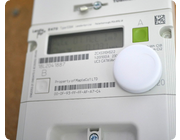 DIY Smart Meter
DIY Smart Meter
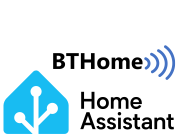 BTHome and Home Assistant Setup
BTHome and Home Assistant Setup
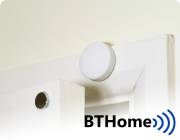 BTHome Door Sensor for Home Assistant
BTHome Door Sensor for Home Assistant
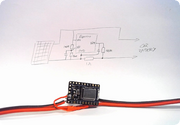 Battery Monitor
Battery Monitor
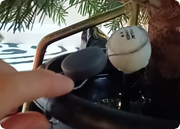 Water Level Monitor
Water Level Monitor
 Puck.js Vibration Sensor
Puck.js Vibration Sensor
 LED BLE Library
LED BLE Library
It's also mentioned on the forum in:
This page is auto-generated from GitHub. If you see any mistakes or have suggestions, please let us know.